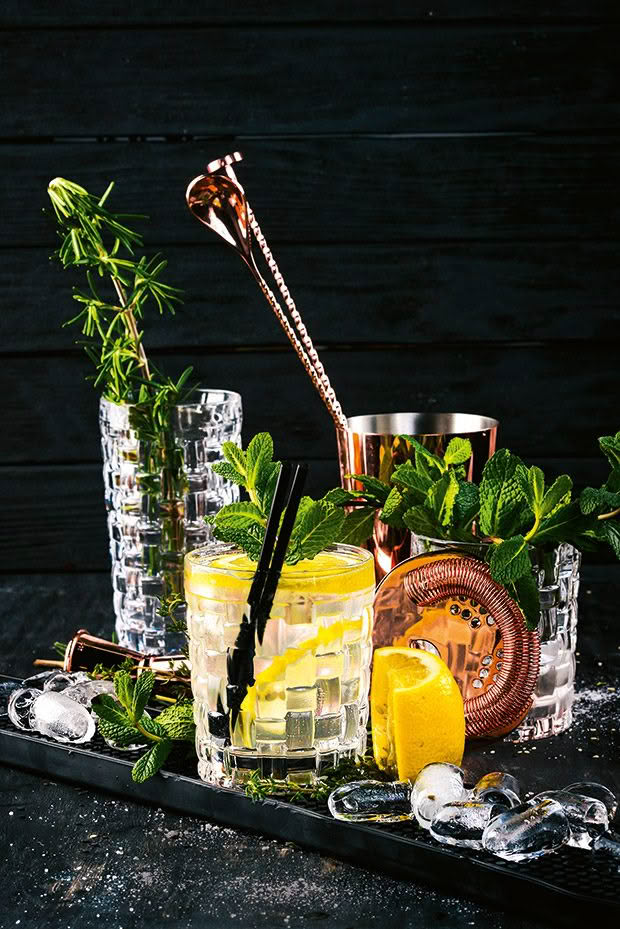What you need to make your own ‘gin’ in a jar

You can use a few key spices, homegrown herbs, and fruit to transform plain vodka into your own ‘gin’.
Words: Nadene Hall
Real gin is pure alcohol that’s flavoured by distilling it with a selection of botanicals. But you can infuse vodka with some botanicals in a jar, filter it after a day or three, and make what’s known as ‘bathtub’ gin (as it was mixed in bathtubs during Prohibition in the US), or ‘compound’ gin (as it uses the cold compound method).
All you need is some basic equipment, vodka, botanicals, and a simple recipe.
THE EQUIPMENT
2 x 1 litre jar and lids, sterilised
sterilised sieve
cheesecloth
open weavedishcloth or coffee filter
THE INGREDIENTS
Vodka: Gin-making tutor Jill Mulvaney of Alembics recommends a mid-range vodka, 40% ABV (alcohol by volume) that uses wild wheat or grain as its base. At the very least, make sure it’s a vodka you like to drink.
Juniper berries: Juniper ‘berries’ are small cones of the juniper tree, about the size of a pea. If they’re newly dried and still full of flavour, they’ll have a leathery texture when you crush them. If they’re too old, they’ll be dry and hard. They’re available in supermarkets in the herbs/spices section or online in small packs of 20-50g.
OTHER BOTANICALS
The ‘holy trinity’ of flavours in gin are juniper, angelica root, and coriander seeds. Many botanicals are available in supermarkets in the herb/spice section, but online craft brewing stores have their own specialist ranges especially for gin.
Suppliers include:
■ www.alembics.co.nz
■ www.hbmalt.co.nz
Tip: For stronger flavours, bruise whole, hard ingredients such as juniper berries and cardamom with a pestle and mortar, or press them under a knife on a board.
Options – dried
■ angelica root;
■ coriander seeds;
■ dried citrus peel (lemon, orange, grapefruit, no pith);
■ black peppercorns;
■ cinnamon stick;
■ cardamom pods;
■ fennel seeds;
■ bay leaves;
■ lemongrass.
Options – fresh
■ flowers, eg roses, lavender (edible);
■ herbs, eg mint, thyme, rosemary;
■ berries, eg raspberries, cranberries, strawberries, blueberries, black currants;
■ vegetables, eg rhubarb, chilli.
METHOD
Choose from one of the four recipes below. When it’s ready, an infused gin will look yellow or orange (depending on the botanicals), not clear. If you want it to look clearer, you can pass it through a water filter jug a few times. However, it still won’t go crystal clear like distilled commercial gin.
1. BBC Good Food has a recipe for compound gin and a large number of infused vodka recipes.
2. Ginned Magazine. The UK’s Craft Gin Club shares its recipe and a how-to video.
3. Liquor.com: Several gin experts share their favourite infusion recipes here.
4. Serious Eats: This recipe includes lavender, chamomile, and grapefruit peel.
Love this story? Subscribe now!
 This article first appeared in NZ Lifestyle Block Magazine.
This article first appeared in NZ Lifestyle Block Magazine.
